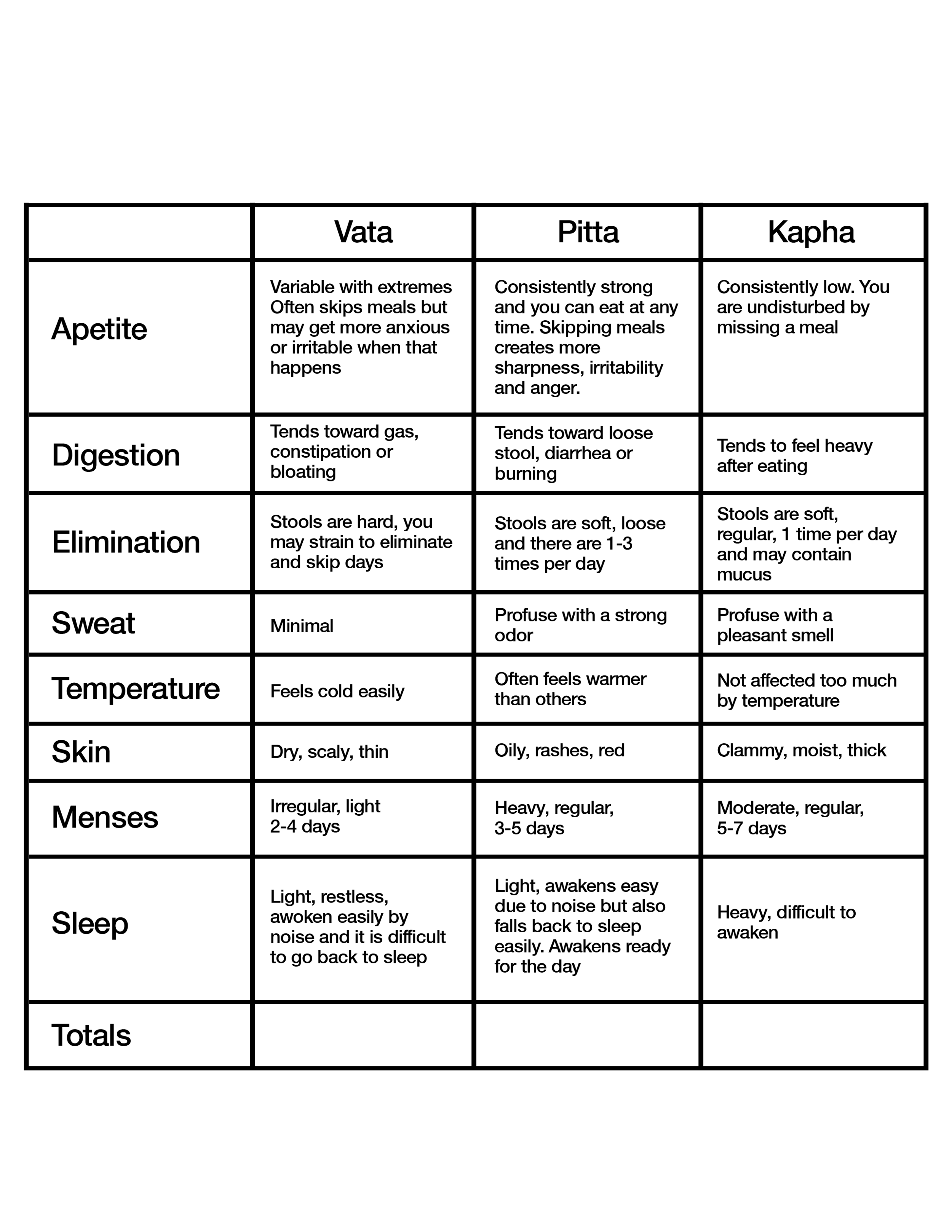
Discovering Your Constitution
The Nature of You
At the moment of conception, your Constitution—a unique balance of the three doshas—was established. This original blueprint, much like an energetic birth certificate, provides insight into your body's natural tendencies, physical structure, mental patterns, and personality.
While genetics determine the physical framework through which the doshas flow, your present state is shaped by both your Constitution and the cumulative experiences of your life.
No one is a perfect expression of their true nature, but understanding your Constitution serves as a map, guiding you from where you are—mentally, physically, and energetically—toward balance and well-being.
3 Types of Constitutions
When you complete the Discovering Your Constitution Assessment, you will end up with a ratio of three numbers. This ratio is your natural balance of the three doshas.
Even though no two constitutions are the same (except for in the case of identical twins) constitutions generally show up in one of three ways.
Dosha Dominant
Dual Dosha
Tridoshic
Discovering Your Constitution
Self Assessment
What you need:
Pen and paper
A relaxed and present mind
Patience
Instructions:
As you make your way through the following three charts, keep track of how many statements are true for you according to the doshas. (See the image for example)
IMPORTANT:
Remember that you are not assessing yourself as you are today, you are assessing your lifelong tendencies. The way you are showing up today is NOT YOUR CONSTITUTION.
This assessment will require some mental flexibility as you recall the way you were before you started making lifestyle decisions for yourself. What patterns were present in your childhood? Who were you before the world made you something else? What is beneath your conditioning? We’re looking for the indicators of your true nature.
It’s incredibly beneficial to have the help of an adult who knew you as a child (like a parent or guardian).
Additional notes:
You can circle more than one dosha for any given row, but try your best to notice the answer that is more dominant and obvious than the others.
If you are not sure, it is fine to leave any question blank.
At the bottom of your collection of tally marks, put the totals for each column.




